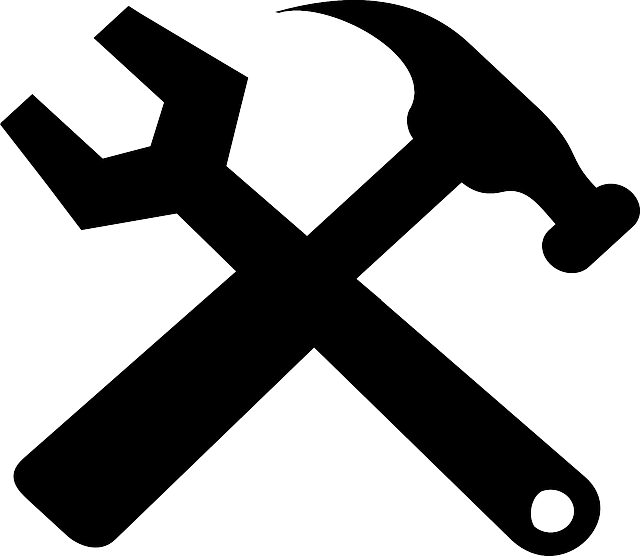The 5S continuous improvement methodology, originating from Japan, transforms cluttered workplaces into hubs of productivity by empowering employees through active participation in organizing spaces and streamlining workflows. This system involves sorting, setting in order, shining/cleaning, standardizing, and sustaining work areas, reducing time wasted on searching, fostering ownership among employees, and improving overall productivity. Effective implementation requires employee training, regular workshops, and open communication to maintain engagement and adapt to workplace changes. By defining measurable metrics and conducting data analysis, organizations can accurately monitor progress, optimize operations, minimize waste, and drive long-term operational excellence through the 5S methodology.
“Boost productivity and transform your workplace with an efficient system—the 5S methodology. This powerful approach, rooted in lean manufacturing, offers a structured framework for optimizing operations. In this article, we explore each element of 5S and its role in driving continuous improvement. From understanding the core principles to empowering employees, you’ll discover practical techniques for implementing 5S to create a sustainable, high-performing work environment. Uncover strategies to streamline workflows, enhance organization, and measure success.”
- Understanding the 5S Methodology: A Foundation for Efficiency
- Implementing Continuous Improvement: The Key to Long-Term Success
- Streamlining Workspaces: Visual Management and Organization Techniques
- Empowering Employees: Training and Engagement in the 5S Process
- Measuring and Optimizing: Tracking Progress and Ensuring Sustainability
Understanding the 5S Methodology: A Foundation for Efficiency

The 5S methodology is a powerful tool that forms the backbone of many efficient workplace systems, driving continuous improvement across various industries. It’s a simple yet profound concept that involves five Japanese words: seiri (sort), seiton (set in order), seiso (shine), seiketsu (standardize), and shitsuke (sustain). This approach is designed to transform cluttered workspaces into organized, streamlined environments, enhancing productivity and overall efficiency.
By implementing 5S, employees actively participate in organizing their work areas, discarding unnecessary items, and establishing standardized practices. The process begins with sorting through items, keeping only what’s essential, and categorizing the rest. Then, it involves setting things in order logically, making it easier to locate tools or documents quickly. Next, shining a light on every corner and crevice of the workspace ensures cleanliness and visibility. Standardization comes next, creating consistent procedures that are easy to follow. Finally, sustainability is key; it’s about maintaining the organized state through ongoing discipline and adherence to established practices, making it an enduring foundation for efficiency.
Implementing Continuous Improvement: The Key to Long-Term Success

In today’s competitive business landscape, implementing a robust workplace efficiency system is no longer an option but a necessity. Among various methodologies, 5S continuous improvement stands out as a game-changer. This Japanese concept, based on the principles of sorting, setting in order, shining (cleaning), standardizing, and sustaining, has been proven to revolutionize workflows, enhance productivity, and foster a culture of excellence. By systematically streamlining processes, minimizing waste, and maximizing employee engagement, organizations can achieve significant long-term success.
The key to unlocking this potential lies in adopting a mindset of continuous improvement. Regularly reviewing and refining work practices ensures that the workplace remains agile and responsive to changing demands. This iterative approach not only drives operational excellence but also encourages innovation and adaptability. In essence, embracing 5S as a foundational practice paves the way for sustained growth, ensuring an efficient, organized, and dynamic work environment that fosters both productivity and employee satisfaction.
Streamlining Workspaces: Visual Management and Organization Techniques

Streamlining workspaces is a key component of enhancing workplace efficiency, and visual management techniques play a pivotal role in this process. The 5S continuous improvement methodology is a widely adopted system that emphasizes the importance of sorting, setting in order, shining (cleaning), standardizing, and sustaining. By implementing these principles, work areas become more organized, reducing time wasted on searching for tools or documents. Visual cues, such as color-coded labels, clear signage, and designated zones, help employees quickly identify where everything belongs, fostering a sense of ownership and accountability.
In addition to 5S, other organization techniques like the Kanban system can be employed. This involves creating visual boards that illustrate workflow steps, enabling teams to manage tasks efficiently and identify bottlenecks. By keeping workspaces neat and organized, employees can focus better on their tasks, leading to increased productivity and a more positive work environment. These practices not only make daily operations smoother but also facilitate easier onboarding for new team members.
Empowering Employees: Training and Engagement in the 5S Process

In any workplace efficiency system, empowering employees is a cornerstone of successful implementation. The 5S continuous improvement process—Sort, Set in Order, Shine (Clean), Standardize, and Sustain—is no exception. Training plays a pivotal role in equipping staff with the knowledge to actively participate in this lean management methodology. It ensures everyone understands their roles and responsibilities, fostering a culture of engagement and ownership. By teaching them the fine nuances of 5S principles, employees become agents of change, constantly seeking ways to streamline processes, reduce waste, and enhance productivity.
Engagement is equally vital. When workers are invested in the process, they’re more likely to adhere to it consistently. Regular workshops, interactive sessions, and peer-to-peer learning can significantly boost engagement. Management should also encourage open communication, where ideas and feedback are welcomed, creating an environment that nurtures continuous improvement. This collaborative approach not only strengthens team dynamics but also ensures the 5S system remains dynamic and relevant as the workplace evolves.
Measuring and Optimizing: Tracking Progress and Ensuring Sustainability

Measuring and optimizing are pivotal components of any effective workplace efficiency system, especially when adopting methodologies like the 5S continuous improvement framework. By establishing clear metrics and key performance indicators (KPIs), organizations can accurately track their progress in streamlining processes, reducing waste, and enhancing productivity. Regular data analysis allows for the identification of bottlenecks and areas requiring refinement, ensuring that improvements are sustained over time.
This involves regularly reviewing and refining standard operating procedures, conducting root cause analyses for recurring issues, and fostering a culture of continuous learning. Engaging employees at all levels in this process is crucial, as their insights and experiences can provide valuable context. Embracing the 5S methodology—sort, set in order, shine (clean), standardize, sustain—enables teams to maintain an organized, efficient, and sustainable work environment, ultimately driving long-term operational excellence.
The 5S methodology offers a powerful framework for transforming workplaces, fostering efficiency, and driving long-term success. By combining structured processes with employee engagement, organizations can achieve remarkable improvements in productivity and workplace satisfaction. Implementing continuous improvement practices ensures that the 5S system remains dynamic and relevant, allowing businesses to adapt to changing needs. Through streamlined workspaces and empowered employees, this approach creates an optimal environment for innovation and sustained efficiency, ultimately enhancing overall operational excellence.
